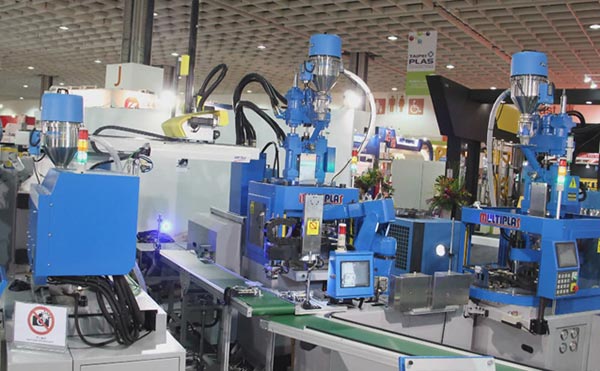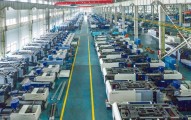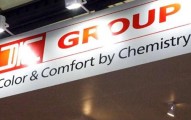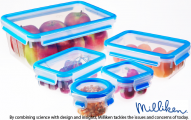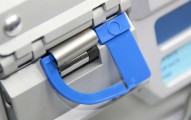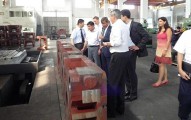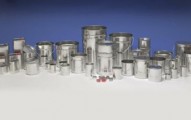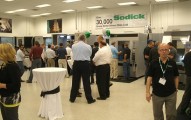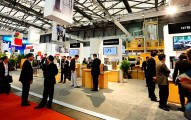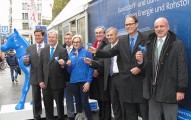Taiwanese Face the Challenges of Producing All-Electrics
At the recently concluded Taipeiplas show, held from 26-30 September in Taipei, industry spokespersons gave their views on the all-electric injection molding machinery sector in Taiwan as well as the tough market conditions, given the strength of Japanese contenders, and the high costs attached to producing the machinery with imported components.
Long walk on the electric line
Taiwan’s plastics machinery sector is at a crossroads: to develop further the all-electric injection molding machine market or to increase the push for hybrid machines.
According to John Hsu, Chairman of the Taiwan Association of Machinery Industry (TAMI), all-electric machinery will become a dominant product in the market. “In years to come, more than 70% of smaller injection molding machines will be all-electrics.” It is for this reason that Hsu says “all-electrics should continue to be developed.”
Hsu pointed out the benefits of all-electrics: no oil pollution, low noise, more precision, faster speed and energy savings. “Therefore, when high-tech industries such as computers, electronics, communication, optics and precision components are going to select injection machines, they will more likely consider using all-electric machines,” he stated.
Meanwhile, David Wu, Chairman of the Plastics and Rubber Machinery Committee (TAMI), said all-electric machines were first introduced by Hong Kong-headquartered machine maker Chen Hsong 20 years ago. “However, it had to import the linear guides and servomotors from Japan and Europe so the pricing was not competitive enough,” he said.
Today, Wu said that only Chen Hsong (through its Taiwanese subsidiary Asian Plastic Machinery), Victor Taichung and Chuan Li Fa Machinery Works offer allelectric machines in their product lines. “All the other companies stopped manufacturing because of the low margins.”
Area Sales Manager of Asian Plastic, Kevin Huang, explained further on the company’s development. “We received a budget of US$1 million from the government in 1994 and were given a deadline of one year to do it. Although we had no experience, we launched the first machine in 1996,” he added.
He says the company produced up until the ninth generation of the series, sold models to customers and even hired a R&D consultant to improve it, but yet “could not capture the market because the Japanese still produce the best designs.”
Though the all-electric series is still in its portfolio, Asian Plastic currently focuses on producing hybrid machines that take up 90% of its output. “We keep improving our technology for hybrids and it is getting better all the time.”
Meanwhile, Bush Hsieh of blow molding machinery maker Chumpower Machinery gave his perspective. “A majority (60%) of our blow molding machinery is allelectric. We import the drives and motors from Japan and Europe. Our approach is that by installing good drives, we can compete with Japanese machinery. In fact, our margins are better than injection machines.” Hsieh also added that if the components could be sourced locally, it would increase the firm’s competitiveness.
Alan Wang, Deputy CEO of Fu Chun Shin (FCS), added, “It is true, we are facing bottlenecks in terms of components. In this transition period, we are developing hybrids, in between hydraulics, and hope to launch allelectrics in the near future.”
Improving all-electrics to stay in the market
Meanwhile, Huang of Asian Plastic says when the company did a comparison between hybrids and allelectrics, the latter still came out tops, in terms of energy savings. This, coupled with servomotors, still provides for a better option in the market.
Wu, who is also President of machine maker Multiplas Machinery, said that the injection units in the machines produced by his company are operated by servomotors.
Harrison Chen of Jon Wai Machinery Works said, “Power consumption savings is the main reason for using servomotors, because the servomotor only requires power when in operation.”
He explained, “In a hydraulic machine, power consumption will be 0.65 units/kg for a 3,000 tonne machine; in a hybrid machine, with electrical charging, consumption totals 0.45 units/kg while in an all-electric machine, the power consumed is 0.30 units/kg.”
Wang of FCS also shared research done with a Kaoshiung-located institute that proves energy savings of 70% when using servomotors in all-electrics.
This is one of the reasons why Taiwanese machine makers are now taking another shot at the all-electric sector.
Several exhibitors at the show displayed new and improved models including Victor Taichung that showed all-electrics, alongside in-mould labelling (IML) and two-component machinery. “The all-electrics are second generation models (150 and 200 tonnes in a series that ranges from 50-300 tonnes) and have been upgraded to feature an injection speed of 300-500 mm/second,” said Manager Martin Li.
He said the first generation model was launched ten years ago. “Though the sales keep fluctuating, all-electrics occupy 10% of our turnover,” said Li, adding that the ball screw and servomotor were sourced from Japan. “This means the machines are more expensive.”
Wang of FCS said the firm is looking at adding allelectrics to its range, though it did go down this path in 2005 and abandoned it because of the high costs. “According to market research, the 150-200-tonne range will be most popular but we will also look at doing 300-350 tonnes.”
“Furthermore, while most all-electric machine makers use belts and drives, we will use a gearbox for the injection unit. It will be from German company Knodler and will allow for higher precision,” he claimed. “Of course, the price of the all-electric machine will be much higher,” he added.
FCS introduced an improved version of the HE hybrid series (launched two years ago) at the show, with Wang pointing out the lower cost, compared to an all-electric. “But next year, we will unveil a new all-electric machine. It will be a new step for FCS,” he added.
Assistance from the government
With hybrids making a stand at the show will machine makers still pursue the development of all-electrics? Perhaps with the government’s help they will. At a press conference, Wang of FCS said that the industry is working together with the government to develop the capabilities and components for all-electrics, such as the ball screws, linear guides, servomotors and drives.
He also said that though there had been a breakthrough in the ball screw, Taiwanese firms still lacked skills for producing servomotors, especially with higher horsepower that is required for large machinery. “There are some Japanese servomotor companies that want to cooperate with the Taiwanese to produce the servomotor in Taiwan.”
In a later interview, Wang said that even if the servomotor and ball screw could be produced in Taiwan, it would still not be possible for 100% of the components for an all-electric machine to come from Taiwan. “Taiwan’s Delta Electronics does provide electronics for hydraulic machines that can also be used for all-electrics, but the controls will still have to be imported.”
Home grown company leads the way
However, homegrown Foxnum Technology, a subsidiary of Taiwanese contract/OEM manufacturer Foxconn Technology Group, may have a solution in hand.
Set up in 2007, it manufactures CNC machine tool control systems, servo systems with drives and motors. Also in its product line is what it says is Taiwan’s first all-electric injection molding machine “with self-developed controller and servo systems, and 350 patents”.
Foxnum developed a 100-tonne all-electric machine in 2009, for Foxconn’s internal use. Having added on 50, 130, 200 and 250-tonne models in 2012, it started selling its machines externally.
Foxnum says it developed a dedicated high-powered servodrive and servomotor, specifically for the allelectrics. It uses high torque motors for the injection and high-speed brake motor for the ejection, while for clamping, it uses a high-speed, overloading motor. The servodrives are from 3-55 kw.
As for the servomotors, the company says it uses a built-in magnet structure “to allow for strong rigidity and longer life, compared to the surface magnet mounting method used by other suppliers.” It also says it provides three times the loading for the motors and three times higher linear torque for a high powered highspeed machine, thus allowing for 20% more production capacity.
With Foxconn’s primary manufacturing being electronic components, which require precision molding, and if it had to produce its all-electric machinery in-house (through Foxnum) to ensure sufficient supply for its use, this does suggest that there is a market for all-electric machinery production in Taiwan.
In the words of Harrison Chen of Jon Wai (that is still developing the technology), the all-electric machine is a “must-have” in any injection machine maker’s portfolio!

